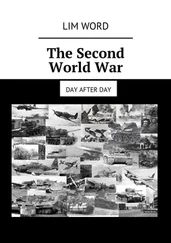Between April and December 1944, the Allies reached the frontiers of the German Reich. By the end of July, the Red Army had recaptured practically all of the territory lost since 1941 and had traversed eastern Poland as far as the Vistula, overrun Lithuania and approached the borders of East Prussia. In early October, it broke through to the Baltic coast north of the city of Memel. In the West, the Ardennes offensive delayed the advance of the Allied troops, giving the Soviet army a decisive advantage in the race to occupy as much territory as possible in the German Reich. The Red Army winter offensive began in January 1945, with 570,000 men on the German side against 1.5 million Soviets. The Soviet soldiers advanced 300 kilometres in just two weeks.
As soon as the Red Army approached, German civilians fled towards the Reich. During the war, the East had not only been a settlement area and colony but also a huge evacuation area for city dwellers in the West to escape from the air raids. In early 1944, 825,000 west Germans had escaped there. The new arrivals and the established German population were now fleeing westwards, from East and West Prussia, from Danzig, Pomerania, eastern Brandenburg and Silesia, but also from Slovakia, Croatia, Yugoslavia and Romania. Between January and May 1945 alone, 7 million people were on the move, marking the start of an endless and drawn-out exodus with as many as 2 million deaths on the way.
For a long time, this flight and expulsion was the only stable point of reference in the accounts of mass rape. The refugees, with no home anymore and an uncertain future, the defenceless par excellence, became the iconic characters in this scenario. There are two reasons for this. The prophecy that German women would suffer when the ‘Russians’ arrived had been long prepared by the Nazi propagandists. The first to feel it were the fleeing women. The mass rapes during the flight and expulsion from the East were indeed partly to do with being overrun by an army that still had the atrocities committed by the German Wehrmacht and SS fresh in their mind. In addition, however, the Nazis exploited them in the interests of the propaganda of survival. The prophecy, based on old prejudices, racial ideology and the ideological struggle, was fulfilled in a tragic fashion.
The other reason that the image of the refugee women as victims of rape has remained frozen in the collective memory is in the narrative itself. We have few institutional sources about the events at the time, but instead countless eyewitness accounts by victims, collected by groups representing the refugees and by the Federal Ministry for Displaced Persons, Refugees and War Victims, for private or academic purposes. This documentation has been used repeatedly since then as a source of literature on the crimes committed during this mass movement; thus, reports about refugee women were better known than reports about rapes in Bavaria or in the French-occupied south-west.
However, it is not only a question of the quantity but also of the quality of the narrative. The fleeing women were usually vulnerable and left to their own devices. They had often abandoned everything, while the remaining men were enlisted into the last lines of defence. Their families were frequently torn apart, and they lost touch with relatives and even with their own children. When the flight came to a standstill, they often found themselves in claustrophobic, camp-like situations. They hid in barns and shelters surrounded by battling troops, where they had to hold out for weeks in agonizing fear without food and even the most rudimentary facilities. And it was in these circumstances that the rapes were committed. The women caught in hiding were singled out by the soldiers, denounced by fellow sufferers and abused in front of their children. The most harrowing aspect for these fleeing and expelled women was that the sexual aggression was committed at a time when they had been torn out of their social surroundings and were particularly exposed as a result.
They were people on the run, who had often had to leave with practically no preparation or time to pack, who had been left in the lurch by the German authorities, who had ignored the calls for evacuation far too long, and who were now hunted down by the Polish and Soviet soldiers who were brutally cleansing the captured territories of Germans. At the same time there was desperate fighting down to the last man and senseless fortifications after the decision had been made in summer 1944 to turn all of Germany into a fortress, with 400 kilometres of defensive positions in Pomerania and 120 kilometres around Breslau [Wrocław] alone. Wherever the earthworks, entrenchments and fortifications held up the Red Army for a few weeks, it merely meant that the number of victims was higher. Soon there was nothing left to eat, and people, especially small children, began to die en masse. Those who survived the hunger and the first wave of violence had in some cases to hold out until they were officially expelled from 1946 onwards, and in the meantime they had to contend with slave labour, imprisonment in camps and deportation.
But even those who had managed to get moving in time, with their handcarts or on foot, often failed to escape. Death was everywhere: corpses lay on the roads, dead animals in the fields, the most terrible spectacle all around. Countless tragedies occurred in the race to escape on boats, trains or foot marches; mothers were forced to look on helplessly as their babies and small children died of disease or starvation, or to abandon frail parents. There were cases of women throwing their children off a boat into the icy water. And all the time the danger of aerial attacks, bombs, street fighting, being shot by friend and foe alike, robbery and murder by liberated slave labourers, concentration camp inmates and even criminals taking advantage of the situation. Boats sank, trains burned, vehicles were involved in accidents. There was no fat, no warm shelter or clothing, and countless people lost their lives through cold, damp, hunger, thirst and disease. And, on top of it all, the all-pervading fear of the enemy and what they would do to the women. An eyewitness on a flight from East Prussia to Schleswig-Holstein summed up the general mood she experienced in this inferno in one word: ‘panic’. [19] Bundesministerium für Vertriebene (ed.), Dokumentation der Vertreibung der Deutschen , vol. I/1, pp. 28–31, 106.
Trapped
We now know that in many German territories in the East, the Party functionaries delayed flight as long as possible and then ordered immediate departure. In Breslau [Wrocław], which Hitler had designated in 1944 as a ‘fortress’, the evacuation was ordered hurriedly and far too late. ‘Hundreds of thousands of people now had to leave the crowded Silesian capital in icy cold weather in a few hours’, eyewitnesses recall the flight in early 1945. [20] Bärbel Gafert, ‘Kinder der Flucht – Kinder der Vertreibung 1945–1948’, in: Deutschland-Archiv 40, 4/6 (2007), pp. 833–5.
It was –10° Celsius; some were lucky enough to get a train, but the vast majority had to leave on foot. Of the 60,000 women and children who left Breslau, almost a third froze to death. Those who could not get away fast enough, including many evacuees from Berlin and the Rhineland, were trapped in the city. The fighting continued for twelve weeks; the city became a war zone and the women the spoils of war.
Leonie Biallas was almost fifteen when she saw the first Russian soldiers. A Soviet officer assured her: ‘Russian soldiers don’t kill women and children. That’s just your Nazi propaganda.’ But he warned: ‘You have nothing to fear from us. But when the other troops come, no one can help you. We have four years of war behind us, and no one has had any leave. The men have been promised German women as trophies of war. That spurred them on to fight.’ [21] Leonie Biallas, Komm, Frau, raboti: Ich war Kriegsbeute (Leverkusen 2010), pp. 17–18.
Читать дальше











